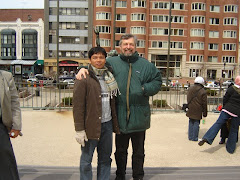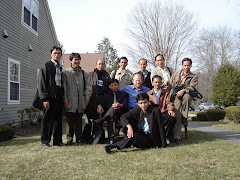Stroke Order
By request, I’ll give you four basic rules on how to write kanji (かんじ) letters. Keep in mind that stroke order differs with each calligraphy school. One school my cultivate a certain style while another may reject that style. Really, what matters is how the letters look. I’ve seen people go against the basic rules and their characters came out just fine. On the same token I’ve seen people follow the rules, with awful looking charcters. Everyone has a certain writing preference. If you go against innate preference for the sake of following the rules, the characters may not turn out as you would have liked. As a result, there is no wrong way to write Japanese characters.
You should write in a way that makes the character readable. As long as it looks remotely something close to the character, it’s fine. There has been some debate among others as to how kanji (かんじ) should be written, but I am telling you that it’s pointless because it’s the end that matters, not the means. In the end, people don’t care how you write it, they just care that it’s legible and comprehensible. With that said, here are some basic guidelines:
1) Start from the left to the right. Here’s an example : the Japanese charcter for “one” is (一). It’s just a horizontal dash written from the left hand side to the right hand side.
2) Start from the top to the bottom. The Japanese character for “three” is (三). Start from the left top and create a straight line. Then skip a space and from the left draw another straight line. Do the same for the last line.
3) Horizontals are written first. After the horizontals, you can deal with the verticals. The Japanese character for “ten” (十) is drawn with the horizontal starting from the left hand side. Then finnish it off with a straight vertical line from the top to the bottom.
4) The outside strokes are written before the inside stroke. The Japanese character for “four” (四) is written with a box or square like character first, then the insides are drawn. I’ll use a metaphor for this character. Draw the “window” first (the square) and then draw the “curtains” (the two inside strokes).
Again, if you enroll in a particular school, the philosophy of the school will go into much more depth with complicated characters. Again, you don’t have to know all those rules to write Japanese characters. The fact that we no longer write with an ink brush and have computerized ways of transcribing Japanese characters have made some of the rules obsolete, so don’t worry too much about the stroke order.














No comments:
Post a Comment